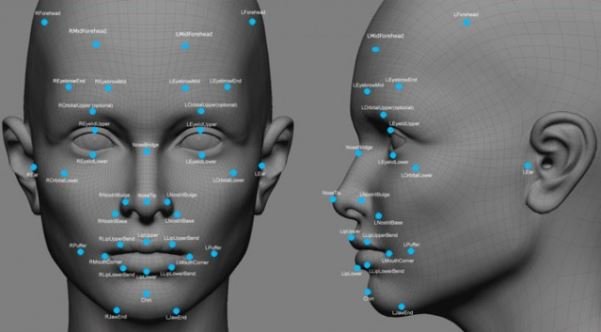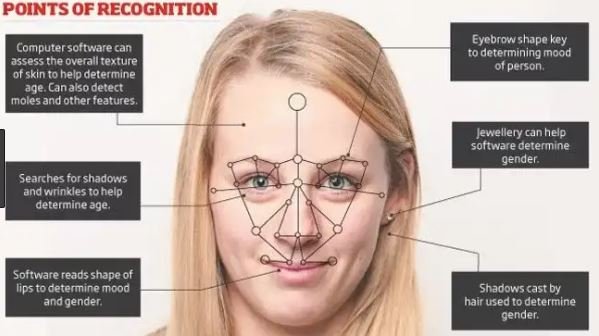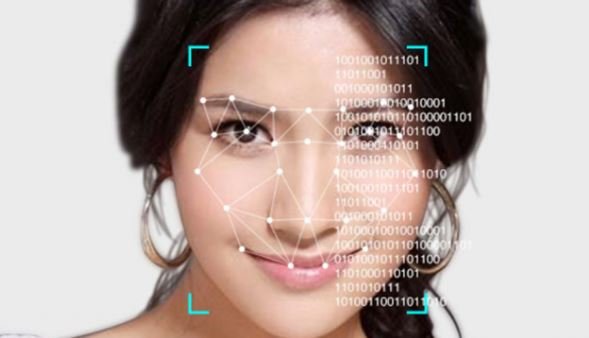Facial Recognition Technology: China's FR System Aiding the Arrest of Criminals
I am a huge fan of sci-fi movies, and a major feature and tool depicted in our top sci-fi movies has always been the facial recognition software. At one point or the other, our favourite movie must have featured the very famous technology to spot a wanted person or criminal.
Even though the technology is no longer just a sci-fi movie frontier, there are still too many difficulties limiting the facial tech tool from going main-stream in every aspect of security relations.

Facial recognition software is presently part of real life surveillance and a security tool ware; such as in smart phones, and on some sophisticated street surveillance, but in reality the concept behind the facial recognition technology is much more complex and more convoluted than people actually realize.
Recent Facial Recognition Software Application
A recent report shows that Chinese cops have been able to integrate facial recognition software into smart glasses that aid their security identification operations. The tech system used by the Chinese comprises of a connected mobile device which contains offline face data carried by the Chinese cops, making the system and facial recognition process work much faster.
As reported the technology has helped the China apprehend thousands of individuals wanted for various crimes and offences and other persons involved in criminal activities such as travelling under false identities.
How does facial recognition technology powered by AI work?
According to an A.I. expert, David Alexander Forsyth, the artificial-intelligence powered software that drives facial recognition functions via a two-step process.
- The First Step
It requires an identification of the location of the facial images. The AI recognition system seeks for a window-like preview of facial images that depict facial countenance, in order to differentiate images clearly.
- The Second Step
It requires analyzing if a selected face can be matched in its database. And according to Forsyth;
“It turns out, that’s a harder problem, at least for algorithms, because people tend to look like each other.”
Therefore, for a successful facial recognition, the recognition system looks for a representation of images in the form of data consisting of numbers, not just peering at images the way humans do. Forsyth also says;
“That representation has to emphasize things that make people look different from each other. The last 10 years or so have seen amazing advances and changes in classifier technologies. The procedure of building that representation of the image has become extremely sophisticated and very effective. Right now, the best way we know, by a long, long way, is to have an immense number of pictures of faces, to build and train these systems”
Artificial Intelligence and Facial Recognition

For artificial intelligence to function; it needs to learn how to do their jobs effectively, and that requires oceans of data. Same applies to the facial recognition too; because the FR system is no different. The system’s algorithms need to learn subtle details needed for it to focus on in order to accurately tell faces and people apart.
The Problem of a False-Match
A perfect and accurate analysis of data is often in every single field of human relations, but with technology, limitations often exists, and perfection is sometimes not always attainable, no matter the level of sophistication of such a technology.
In relation of the above point to facial recognition, any such limitation can truly be worrisome as an error, a mixup or a false match could have serious damning consequences – not to mention legal ramifications.
Therefore, such a mixup for facial recognition software could result in false matches or false positives – where the system might think it has flagged someone who is considered a person of interest, whereas the person is in fact, not one.
Comparison of Facial Recognition usage
Using facial recognition technology to identify faces or persons vary in terms of usage. On smartphones, for instance, a facial unlocking ID involves a “low-stake” interaction with the phone – meaning you are purposefully submitting and presenting your face to the smart device to identify you and unlock it.
In the event that your phone fails to recognize you based of several instantaneous or on-the-spot variables – like sunlight, dark shadow, reflections, make-up etc., you simply make use of your password to unlock your device.
A smartphone like Apple’s iPhone X boasts of facial ID recognition, but in reality the iPhone just needs details of your own face alone, which it analyses in three-dimensional form in order to grant you access; with Apple reporting that the odds of a different person unlocking your iPhone X via facial ID is one in one million.
However, using the facial recognition technology in a crowded location or to scan places with multitudes of faces such as airports, markets, train stations, etc., would definitely present huge challenges due to the “false-match” problem; the result of which would not affect only one person but would disrupt travel plans or movement of other persons via delays. To sum it up, an erroneous situation such as a false-match can be pretty tricky to deal with.
Conclusion
It would portend well for global security, not just for domestic or regional security, if this technology can be properly harnessed, devoid of any challenges and limitations which is currently faces.
The idea of a smart-eye glass quickly prompting a police officer, via facial recognition linked with CCTV cameras or some other sophisticated algorithm, that the person currently standing five-feet from him, snatched a lady’s purse forty-minutes earlier a few blocks away, would be simply amazing. Or a facial-recognition tech alerting an officer about a wanted fugitive who is currently trying to hail a cab or board a train.
The various application of such a technology would definitely boost security, the world over; as law enforcement agents can heave a sigh of relief knowing that an AI powered smart glass can aid their job of security and policing, via facial recognition.
Reference: r1, r2, r3, r4, r5, r6, r7
Thank you for your time and for reading my post.
If you found this post interesting, then kindly UPVOTE, RESTEEM and FOLLOW @rickie, for more quality posts.
You Can Check Out My Other Posts Below:
- The Science of DNA Extraction, and the use of Sodium
- The future of wireless communication hinges on Terahertz frequencies
- [Sansanmycin Uridylpeptide]: The New compound from Soil Bacteria to eradicate Tuberculosis
- Monitoring Diabetes Just Got A Little Bit Easier With Nanotechnology
- The Future of Space Food for Astronauts Could be Human Excrement (Faeces)
- A Bacteria Has Been Found To Produce Gold By Consuming Metals
- The future of Oil-Spill Cleanup could be Oil-absorbing Cellulose


great article here.
i just hope other countries will emulate this and reduce crimes in thier countries
Yes, i hope so too. The technology will surely help curtail and check crime rates globally. Thanks for reading @mzteem.
In the facial recognition system, do they incorporate facial identification first before the recognition system or the F.R system does both identification and recognition. Hope there'll be more of AI stuff, am a fun. Great piece, thanks for sharing.
Yes @nigtroy, the FR system does both identification and recognition, which actually sums up to a single operation. The first step ideally would be to identify a facial target, and the next step would be to compare the identified face with a database of faces to recognise and match the face. It all happens quickly since the system is powered by an AI, I suppose. And yes, more of AI is definitely going to be a future trend in science and tech. I believe AI technology is here to stay. Thanks for reading.
Congratulations! This post has been upvoted from the communal account, @minnowsupport, by Rickie from the Minnow Support Project. It's a witness project run by aggroed, ausbitbank, teamsteem, theprophet0, someguy123, neoxian, followbtcnews, and netuoso. The goal is to help Steemit grow by supporting Minnows. Please find us at the Peace, Abundance, and Liberty Network (PALnet) Discord Channel. It's a completely public and open space to all members of the Steemit community who voluntarily choose to be there.
If you would like to delegate to the Minnow Support Project you can do so by clicking on the following links: 50SP, 100SP, 250SP, 500SP, 1000SP, 5000SP.
Be sure to leave at least 50SP undelegated on your account.
I've followed your blog quite a while ago. Nice share.